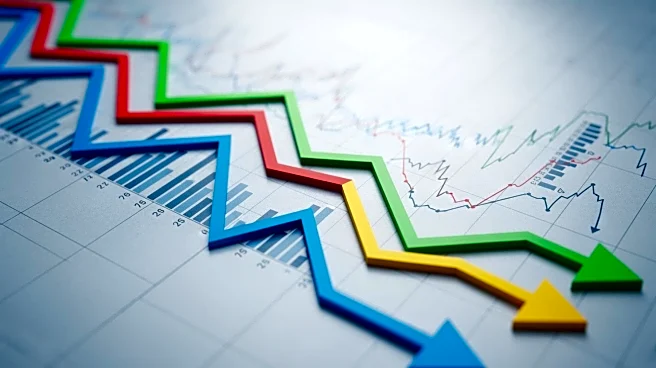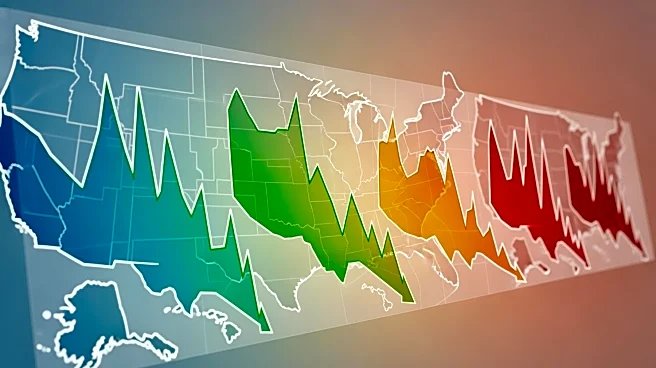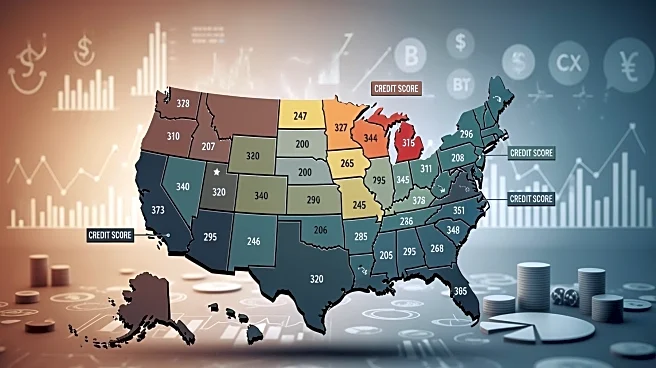What's Happening?
The average U.S. credit score has dropped to 715, marking a two-point decline from the previous year, according to FICO's Score Credit Insights. This represents the largest drop since the Great Recession, attributed to persistent inflation and a sluggish
job market. Increased reliance on credit and decreased on-time payments have contributed to the decline. The report highlights regional variations, with Mississippi and Louisiana having the lowest average scores, while New Hampshire and Wisconsin have the highest. The analysis also points to a growing divide among consumers, with shifts in the distribution of credit scores across different ranges.
Why It's Important?
The decline in average credit scores has significant implications for consumers and the economy. Lower scores can affect individuals' ability to secure loans, credit cards, and favorable interest rates, impacting financial stability and purchasing power. The regional disparities in credit scores may reflect broader economic challenges, such as income levels and employment rates. Understanding these trends is crucial for policymakers and financial institutions to address underlying issues and support consumer financial health.
What's Next?
Efforts to improve credit scores may involve increased financial education and support for consumers struggling with debt. Stakeholders may focus on addressing economic factors contributing to credit score declines, such as employment opportunities and income growth. Monitoring credit score trends will be essential for predicting future economic conditions and consumer behavior.
Beyond the Headlines
The growing divide in credit scores may have long-term implications for economic inequality and access to financial resources. Addressing these disparities could involve targeted policies to support low-income regions and improve financial literacy.
















